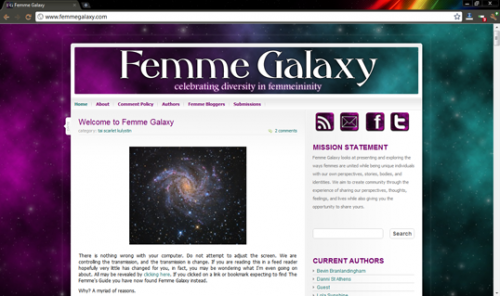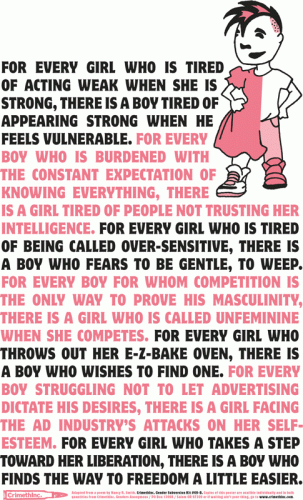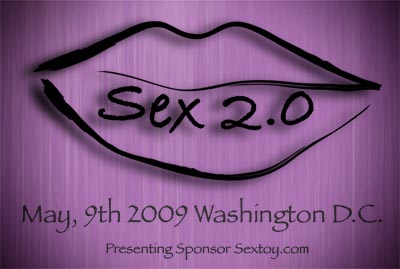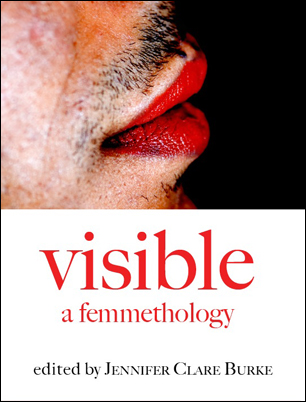
Audrey Hepburn in Funny Face
I have a secret (or not so secret?) love of old 50s and 60s movies with Audrey Hepburn, Marilyn Monroe, Cary Grant, Fred Astaire, and so on. As much as I adore genderfucky practice there is something so lovely about watching Audrey Hepburn and Fred Astaire sing and dance in fabulous clothing (which happens to be what is on the television as I write this), or any of the various other very hetero very gender normative pairings that are mainstream movies from that era.
Why are some of my ‘comfort movies’ classics like Gentlemen Prefer Blondes? With winning exchanges like “I can be smart when I want to, but most men don’t like it, except Gus.” “No, that much of a fool he isn’t.”
Granted, there are a few gender bending movies like Some Like It Hot and strong female characters in other movies as well, though inevitably they always end up wrong somehow and the men end up right. In Some Like It Hot there are some wonderfully amusing and genderfucking moments, though they happen on the part of Daphne/Gerald who is willing to dress up as a woman from the beginning, unlike Joe/sephine who only agrees to it after they witness a mob mass-murder.
Though I didn’t used to when I was younger, I now recognize the inherent sexism within most of these films, and instead of being upset about it I shrug and think “that’s the way it was.” I think that is necessary in some ways, however, since there’s no use getting mad over something that happened 50 years ago, and if the same themes or lines were in movies today I would definitely be upset about it. However, my complacency about the sexism and stereotypes portrayed is a little disturbing to me all the same.
Is my recognizing the inherent sexism the most important part of the equation? I can’t help but love movies from that era, partially because they have been my comfort movies for over ten years. It’s always nice to watch a movie with a happy ending, and these usually have them. While as I mentioned above there are usually some strong characters in the movies they are often somehow wrong or proved wrong throughout the course of the movie or they are not seen as sexual or love objects, such as the magazine owner in Funny Face who is obsessed with her career and says that she has no room for love.
I think part of my love of these movies, aside from the happy endings, is the fabulous clothes, hair, and make-up all the female leads always have. Even when they are “broke” as in How to Marry a Millionare or Some Like It Hot they are still femmed up to the nines with elegant dresses, furs, sequens, gorgeous shoes, perfect hair, etc. The men, as well, are elegantly dressed: suits and ties, fedoras, sleek and gorgeous clothing. The femme in me revels in the wonderful hair and makeup.
I’ve always loved the style of these movies, the classicly glamorous look that the starlets represent, the pin-up look that never seems to go completely out of style. I love that the women in the films are actually women-sized, as opposed to the stick figures we mostly see today. Lately I have been wanting to cut my hair, get some rollers, and start wearing it like a redheaded Marilyn Monroe.
In the end, I think what is really important is that we recobnize the sexism in these films when we watch them now, since they were made in times that were trying to portray heterosexist and gender normative ideas as the norm (not to say we don’t still have that now). We all know that the 50s and 60s were trying to portray an image of perfection and normalcy that is basically unattainable, and wasn’t attained even then, although people strived for it. The movies of that era are equally unattainable, like fairy tales or romance novels (minus the smut), but they sure are fun to watch.
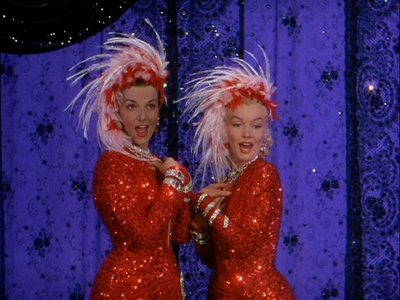
Marilyn Monroe and Jane Russell in Gentlemen Prefer Blondes
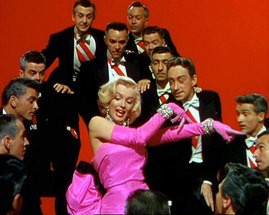
Marilyn Monroe in Gentlemen Prefer Blondes
